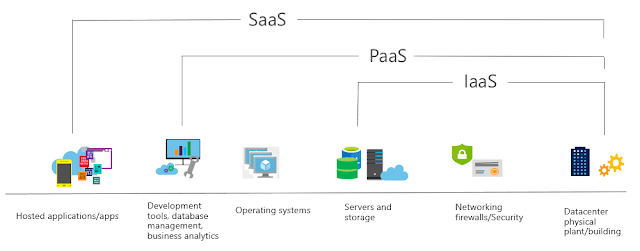Cloud Computing Services are service deployment models that let you choose the level of control over your information and types of services you need to provide. There are three main types of cloud computing services, sometimes called the cloud computing stack because they build on top of one another.
1. Infrastructure as a Service (IaaS)
Infrastructure as a Service (IaaS) is the most basic category of cloud computing services. With Infrastructure as a Service (IaaS), you rent IT infrastructure servers and virtual machines (VMs), storage, networks, and operating systems from a cloud provider on a pay-as-you-go basis. It's an instant computing infrastructure, provisioned and managed over the internet.
2. Platform as a Service (PaaS)
Platform as a Service (PaaS) provides an environment for building, testing, and deploying software applications. The goal of Platform as a Service (PaaS) is to help create an application as quickly as possible without having to worry about managing the underlying infrastructure. For example, when deploying a web application using Platform as a Service (PaaS), you don't have to install an operating system, web server, or even system updates. Platform as a Service (PaaS) is a complete development and deployment environment in the cloud, with resources that enable organizations to deliver everything from simple cloud-based apps to sophisticated cloud-enabled enterprise applications.
Resources are purchased from a cloud service provider on a pay-as-you-go basis and accessed over a secure Internet connection.
3. Software as a Service (SaaS)
Software as a Service (SaaS) is software that is centrally hosted and managed for the end customer. It allows users to connect to and use cloud-based apps over the internet. Common examples are email, calendars, and office tools such as Microsoft 365.
Software as a Service (SaaS) is typically licensed through a monthly or annual subscription, and Microsoft 365 is an example of Software as a Service (SaaS) software.

